The CBU-119 Dragon is an anti-tank cluster bomb munition with a forward ejecting casing and 10 submunitions.
Each of the 10 BLU-108/A's contains 4 bomblets each, bringing the total submunitions count to 50. Improving from the CBU-87 and 97, the CBU-119 Dragon uses the 10 submunition dispensers as bomblets themselves adding an anti-infantry capability.
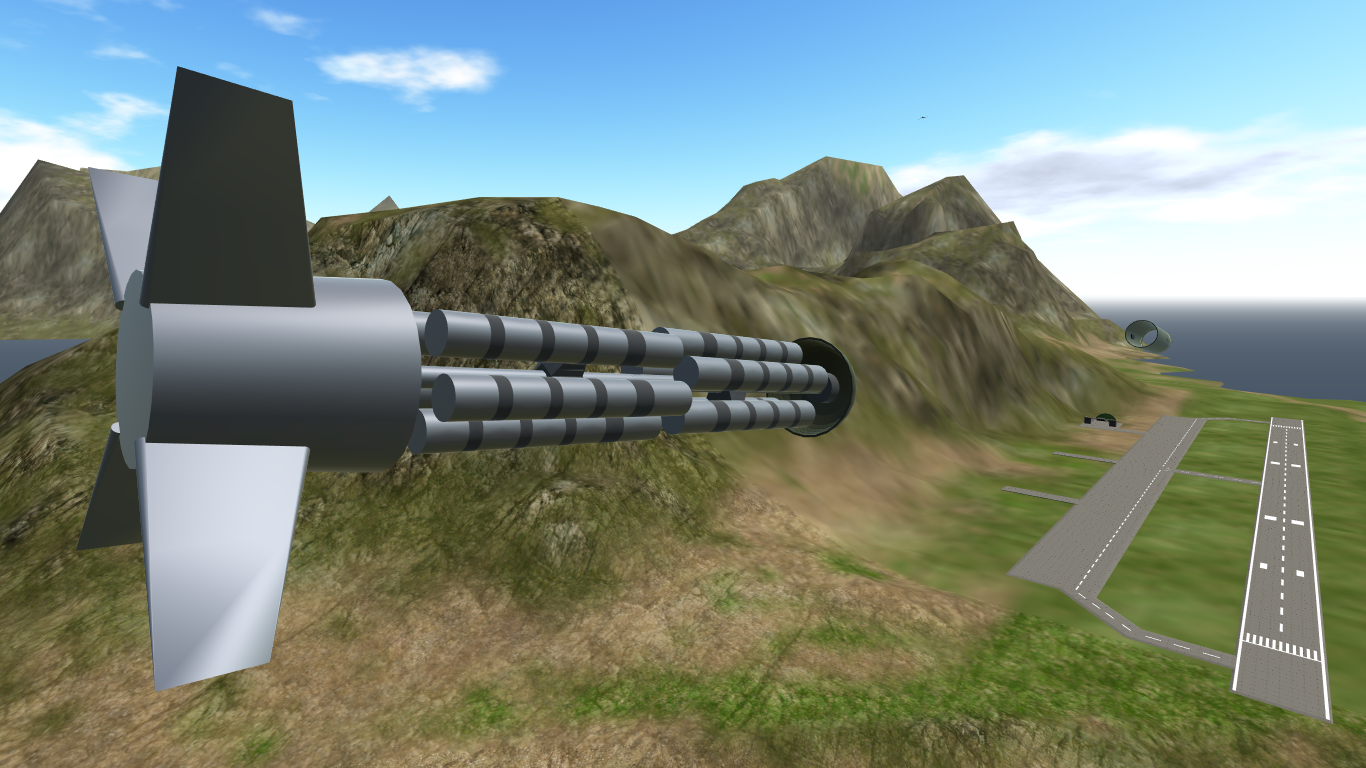
Inside of the CBU-119
When ejected, the CBU-119 sheers its outer casing then ejects the 10 submunitions. The submunitions eject the bomblets and when they hit the ground, the explosives go off and spray shrapnel that can easily penetrate tank armor.
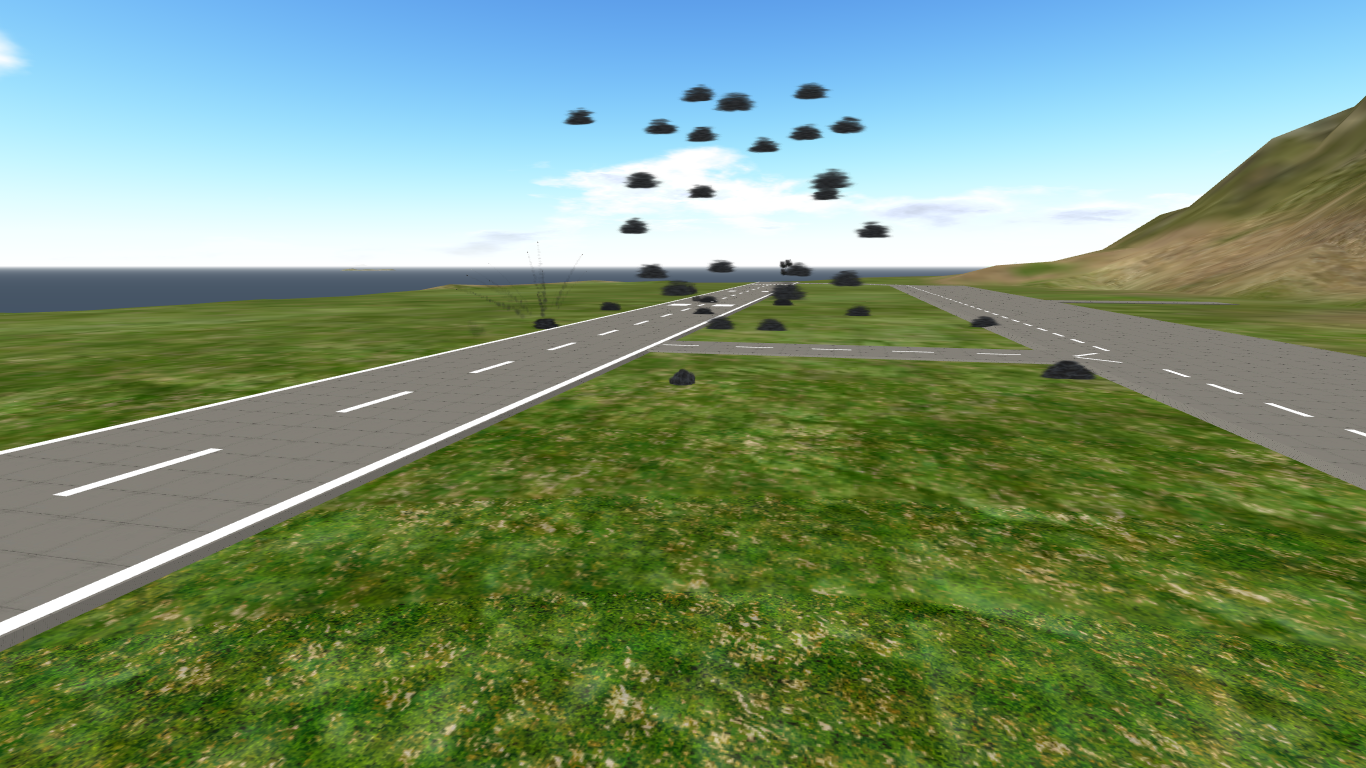
Features:
NO AGS
USED FT (A LOT)
UNFOLDING TAIL (AS USUAL)
EJECTIONS BASED ON TIME RELEASED FROM PLANE NOT ALTITUDE (DUE TO TECHNICAL DIFFICULTIES BUT ALLOWS EXPLOSIONS TO BE CLOSER OR FURTHER APART IN RELATION WITH ALTITUDE.)
MASSIVE EXPLOSIONS
MASSIVE AWESOMENESS
FIRST WORKING CLUSTER BOMB IN SP HISTORY!!!
Notes:
-Based on the CBU-97 and 87
-Only 2 were included in this package due to technical difficulties and part count.
-These parts are extremely attachment sensitive
-Grab by the gray fuselage and save each as different subassemblies
-Each bomb is different and unique of the other
-104 Funky Tree Equations used
-Countless hours of painstaking programming and editing attachments were used so I hope you guys like it!
Specifications
Spotlights
- Dimkal 5.0 years ago
- LegnaK 5.0 years ago
- ChiChiWerx 5.0 years ago
- CRJ900Pilot 5.0 years ago
- NFIGMT 5.0 years ago
- Marine 5.0 years ago
- Renameduser4 5.0 years ago
- EliteArsenals24 5.0 years ago
- ACEPILOT109 5.0 years ago
- edensk 5.0 years ago
- Shimamurahougetsu 5.0 years ago
General Characteristics
- Created On Windows
- Wingspan 9.7ft (3.0m)
- Length 11.6ft (3.5m)
- Height 5.6ft (1.7m)
- Empty Weight 1,999lbs (907kg)
- Loaded Weight 1,999lbs (907kg)
Performance
- Wing Loading 297.2lbs/ft2 (1,451.2kg/m2)
- Wing Area 6.7ft2 (0.6m2)
- Drag Points 158
Parts
- Number of Parts 437
- Control Surfaces 0
- Performance Cost 2,502

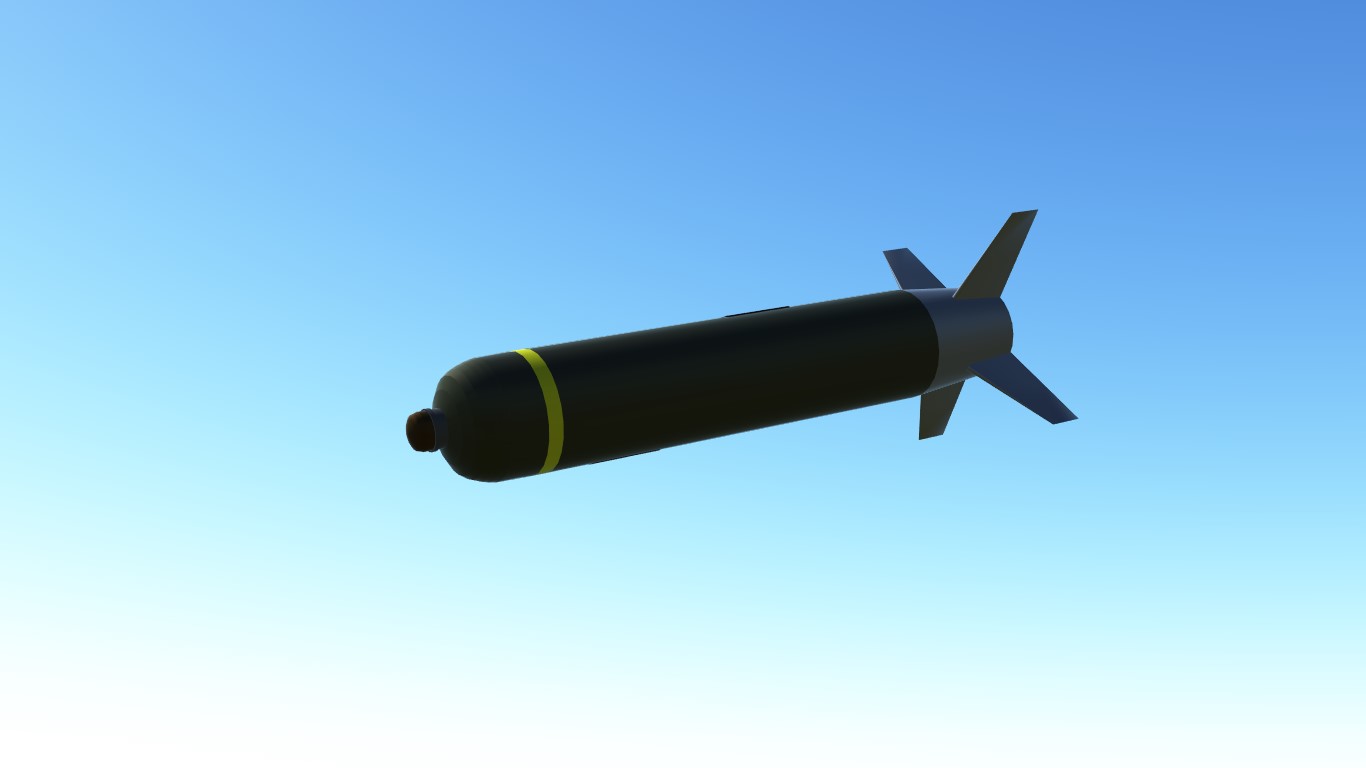
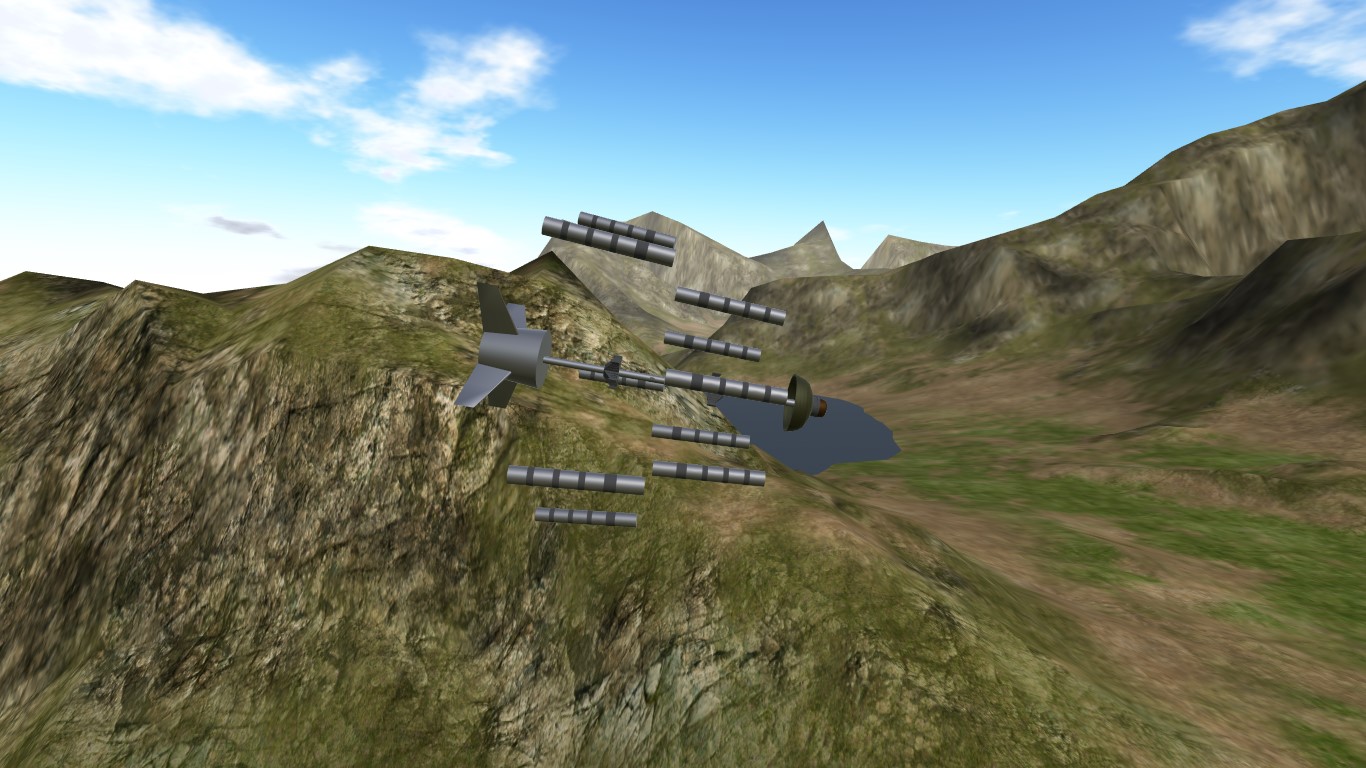
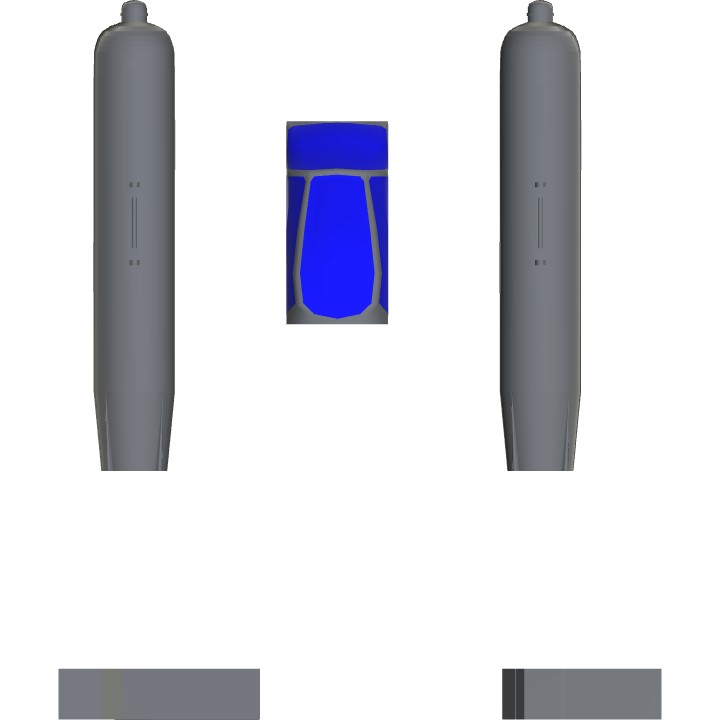


@ChisP Works perfectly and its lethal against armored targets! It will definitely be amongst the weapons of my next attack aircraft!
Big thanks to all my testers on this @DIloph and @CRJ900PILOT
Again, grab by the gray fuselage part floating above the bomb and each bomb
IS DIFFERENT
Also, I forgot to make it CBU-119 instead of CBU-97 in the bomb name you can get the correct version here
may i ask?
how to attach this bomb to the plane, does it require a pyton?
Idk how to use it when I attach it on a plane when I'm driving the bomb randomly explodes pls answer
the whole point was to not do that and im not gonna do it just bc one person asked for it redoing this would take days of work @simpleaerospace
@Platinunswan yeah np
Then I used it wrong, I directly attach it to a pylon. Thanks for reply.@ChrisPy
@Platinunswan you might be attaching it wrong make you only use the attachment editor to attack the aircraft to the detacher and then nudge it into place. This weapon has been working through all updates so it is most likely user error
Why when I attached it to a aircraft, the tail fins don’t work.
谢谢
Yeah lol I’ve tested it there a couple of times@Spangsege
Have you seen This on the beast there is like 20 fires its cazy upvote from me
warcrime time
10/10
Hey I don’t appreciate the comment. If you have a problem let me know and I can help you out. Don’t be accusatory. The most likely problem is that you are only using one cbu. You need to use cbu #1. Let me know if this does not help @thefalkenreich
@shipster Thanks
This is awesome!
@BaconAircraft Yeah this is a US CBU tho none of the rules apply
@ChisP lol i had to shitpost that whenever i see clusterbombs. good build tho.
Yeah I know the CBU-97 however is not banned and it does not have any form of guidance and it has 10 submunitions. However, I am glad to see someone taking a technical interest in my builds. @BaconAircraft
spready many little bomb bad
The convention of Cluster Munitions
The Convention on Cluster Munitions (CCM) is an international treaty that prohibits the use, transfer, and stockpiling of cluster bombs, a type of explosive weapon which scatters submunitions ("bomblets") over an area. The convention was adopted on 30 May 2008 in Dublin,[6] and was opened for signature on 3 December 2008 in Oslo. It entered into force on 1 August 2010, six months after it was ratified by 30 states.[2] As of February 2020, 108 states have signed the treaty and 108 have ratified it or acceded to it.[3]
Countries that ratify the convention will be obliged "never under any circumstances to":[7]
(a) Use cluster munitions;
(b) Develop, produce, otherwise acquire, stockpile, retain or transfer to anyone, directly or indirectly, cluster munitions;
(c) Assist, encourage or induce anyone to engage in any activity prohibited to a State Party under this Convention.
The treaty allows certain types of weapons with submunitions that do not have the indiscriminate area effects or pose the same unexploded ordnance risks as cluster munitions. Permitted weapons must contain fewer than ten submunitions, and each must weigh more than 4 kilograms (8.8 lb), and each submunition must have the capability to detect and engage a single target object and contain electronic self-destruct and self-deactivation mechanisms.[8] Weapons containing submunitions which all individually weigh at least 20 kg (44 lb) are also excluded.[9] A limited number of prohibited weapons and submunitions can be acquired and kept for training in, and development of, detection, clearance and destruction techniques and counter-measures.
History
The impetus for the treaty, like that of the 1997 Ottawa Treaty to limit landmines, has been concern over the severe damage and risks to civilians from explosive weapons during and long after attacks. A varying proportion of submunitions dispersed by cluster bombs fail to explode on impact and can lie unexploded for years until disturbed. The sometimes brightly colored munitions are not camouflaged, but have been compared to toys or Easter eggs, attracting children at play.[10][11] Human rights activists claim that one in four casualties resulting from submunitions that fail to explode on impact are children who often pick up and play with the explosive canisters well after the conflict has ended.[12] The 2006 Lebanon War provided momentum for the campaign to ban cluster bombs. The United Nations estimated that up to 40% of Israeli cluster bomblets failed to explode on impact.[13] Norway organized the independent Oslo process after discussions at the traditional disarmament forum in Geneva fell through in November 2006.[14]
The cluster munitions ban process, also known as the Oslo Process, began in February 2007 in Oslo. At this time, 46 nations issued the "Oslo Declaration", committing themselves to:
Conclude by 2008 a legally binding international instrument that prohibits the use and stockpiling of cluster munitions that cause unacceptable harm to civilians and secure adequate provision of care and rehabilitation to survivors and clearance of contaminated areas.[15][16]
The Oslo Process held meetings in Lima in May 2007 and Vienna in December 2007. In February 2008, 79 countries adopted the "Wellington Declaration", setting forth the principles to be included in the convention.
Adoption
Delegates from 107 nations agreed to the final draft of the treaty at the end of a ten-day meeting held in May 2008 in Dublin, Ireland.[18] Its text was formally adopted on 30 May 2008 by 107 nations,[19] including 7 of the 14 countries that have used cluster bombs and 17 of the 34 countries that have produced them.[20]
The treaty was opposed by a number of countries that produce or stockpile significant quantities of cluster munitions, including China, Russia, the United States, India, Israel, Pakistan and Brazil.[12] The U.S. has acknowledged humanitarian concerns about the use of cluster munitions, but insisted that the proper venue for a discussion of cluster munitions was the forum attached to the Convention on Certain Conventional Weapons, which includes all major military powers.[21] The U.S. has further stated that the development and introduction of "smart" cluster munitions, where each submunition contains its own targeting and guidance system as well as an auto-self-destruct mechanism, means that the problematic munitions are being moved away from in any case.[12] In 2006, Barack Obama voted to support a legislative measure to limit use of the bombs, while his general election opponent John McCain and his primary opponent Hillary Clinton both voted against it.[22] According to the Pentagon's 2008 policy, cluster munitions are actually humane weapons. "Because future adversaries will likely use civilian shields for military targets – for example by locating a military target on the roof of an occupied building – use of unitary weapons could result in more civilian casualties and damage than cluster munitions," the policy claims. "Blanket elimination of cluster munitions is therefore unacceptable due not only to negative military consequences but also due to potential negative consequences for civilians."[23]
The treaty allows certain types of weapons with submunitions that do not have the indiscriminate area effects or pose the same unexploded ordnance risks as the prohibited weapons. These must contain no more than nine submunitions, and no submunition may weigh less than 4 kilograms (8.8 lb). Each submunition must have the capability to detect and engage a single target object and contain electronic self-destruct and self-deactivation devices.[8] Weapons containing submunitions which each weigh at least 20 kg (44 lb) are also excluded.[9] Australia, which supports the treaty, stated that the convention does not prohibit the SMArt